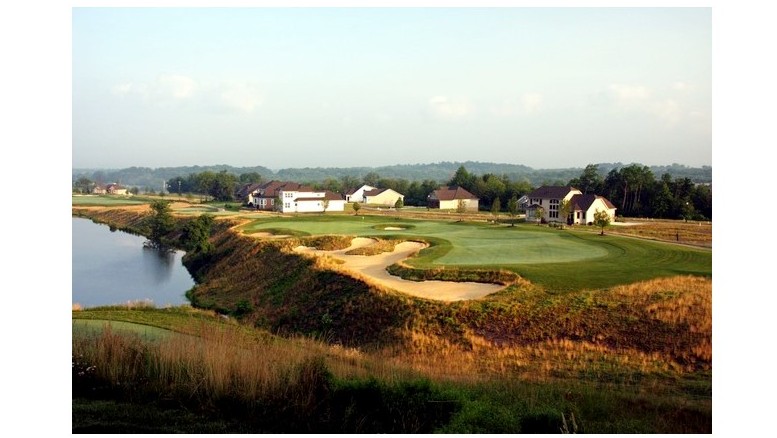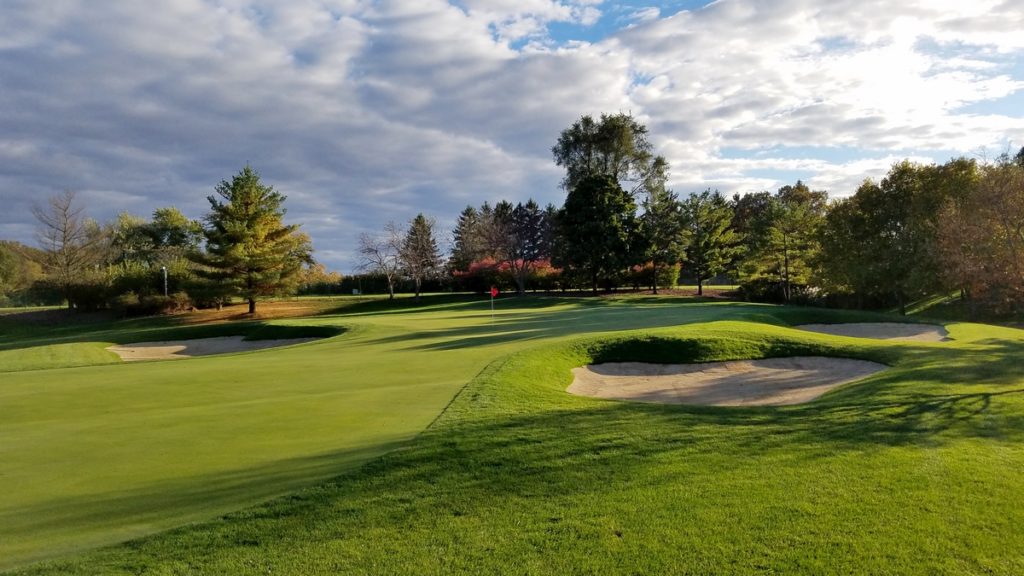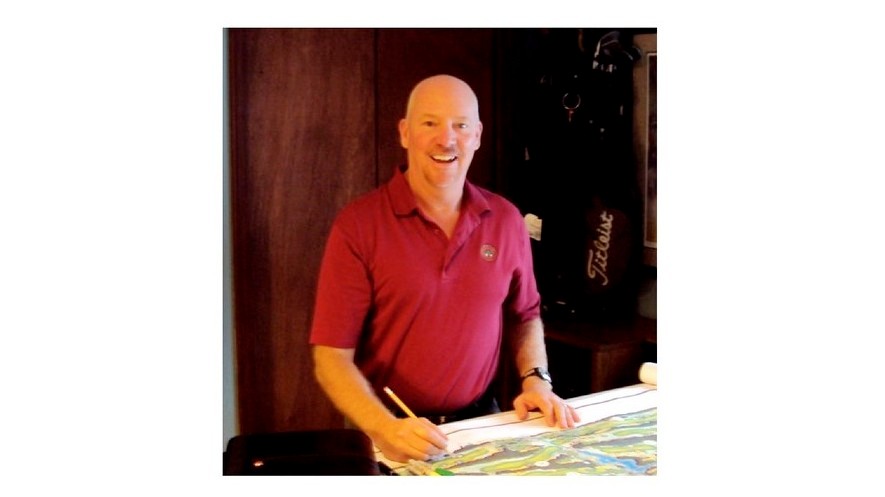The golf world is going through a clear reshuffling of the course deck. The shock waves from The Great Recession, which officially ended in 2009 still reverberate. Since 2011 more than 800 courses have closed in North America and that trend is now ebbing. The golf market is clearly in transition as baby boomers age out and the question on whether Millennials will take to the sport still remains unanswered.

What does 2020 look like?
Four architects were asked to give their perspectives on how they view the marketplace – primarily with a North America perspective – and what key issues need to be dealt with directly and decisively.
The golf market has clearly evolved. Past assumptions have clearly been impacted by a fast moving changing landscape. The challenges facing the golf market are varied and some will not be immediately solved. The golf courses coming forward will need to deal with a myriad of challenges topics and the wherewithal to deal with them will clearly determine the economic successes of the game itself.
Four golf course architects with active golf architecture practices in North America weigh in on how they see the present market and what likely lies ahead with the new year beckoning.
What letter grade would you give the golf course development business at this moment in North America?
MICHAEL BENKUSKY: A. We are seeing a lot of destination golf being built which is great for the core golfer. Many areas are starting to embrace the short course and nine-hole golf courses are great for the beginning golfer and the time strapped golfer. I feel we are in a good place at this time.
JAY BLASI: C+ We have a handful of developers who are committed to great golf architecture and a great golf experience. We are starting to see some municipalities “get it” and invest in fun, sustainable, high-quality design. And yet we still have many clubs or developers who seem to invest in or focus on the unsustainable elements of the game or develop golf for non-golf purposes.
BRIAN HUNTLEY: C- at this moment in North America. Very conservative and not willing to invest in anything other than a traditional 18-hole facility.
DOUG CARRICK: C- at the present time. While the industry has basically done what was required to adjust to depressed market conditions, including closing golf courses in over saturated or under performing markets, promoting more family friendly facilities and reduced membership fees or pay as you play rates. However. little has been done to address more significant problems relating to maintenance costs, land costs and reducing the footprint required for regulation or championship golf courses.

It appears the shock waves that emanated following The Great Recession in 2009 are still sorting themselves out. Some have said a loss of 20-25% of the total existing courses in the USA is likely the best way to cull the herd of under-performing and unprofitable courses. What’s your take on that proposition?
DC: The elimination of unprofitable or under-performing courses follows a natural selection process similar to the laws of the jungle — a survival of the fittest. The rising value of real estate, in densely populated urban areas, has also placed increasing development pressure on many existing golf courses, especially those on valuable real estate with development potential.
JB: Contraction is happening. I think contraction can be a good thing if you lose poorly designed courses built for the wrong reasons and reinvest in those in good areas. Unfortunately, we are losing some good courses or courses that could be good in good locations while many poorly designed courses remain.
BH: I mainly practice in the Midwest. There has been a substantial loss of golf courses in this area. Some of this loss was the consequence of ill-conceived projects, and mismanagement. The success of a course depends on numerous factors, including course density, proper management, demand, and facilities serving the correct demographic. Just like any business, a golf course needs to identify its market and niche and make sure there is a demand for it before it is built or renovated. This basic principle needs to be followed or the course will struggle.
MB: I believe we are still seeing some weeding out of under-performing golf courses, it is just something that isn’t happening right away. Some of this is due to the current economy and owner’s hoping that it still trickles down to their course. But for this to happen they will need to invest in their course to keep up to their competition. I think to lose 20-25% would be a stretch, more like another 10-15%.
Is there a market for golf architecture that’s both affordable and quality oriented in today’s market?
JB: There is a consumer market, but I’m not sure there’s much of a developer market. The developers who are offering a high quality product are asking for, and receiving, a premium for such. I’m a strong advocate of creating a non-profit foundation that invests in high quality affordable golf. Imagine having a facility like Bandon Dunes at 1/3 the price?
DC: In a word — yes. The challenge is finding ways to make them economically feasible. Scenic properties with great natural character combined with lower land costs, construction costs, maintenance costs and minimal debt have a much greater chance of success in providing more affordable but high quality golf experiences.
MB: We are seeing more community golf, the roots of the game, begin to take more interest in the design of the golf course. They see that to compete with their competition, they need to create interest. Finally, we are working with the Golf Course Superintendent’s Association of America (GCSAA) to create courses that can be maintained at affordable levels.
BH: I definitely think there is a market for quality and affordable architecture. In fact I believe myself and many other architects have been providing this service for years. Owners who attempt to renovate without expert input wind up with poor results and wasted money. I believe renovation design allows me to be more creative as well as focused on the big picture. I believe it is even more crucial to have an experienced, affordable architect who is willing to help a client with these more realistic budgets because every dollar matters.

The usage of water will likely only intensify as the years pass — how well-versed do you see the key stakeholders in appreciating the importance of this topic given how many more non-golfers view the sport as wasting such a precious resource?
BH: We in the industry understand how important and sensitive this issue is. I think we are all trying to educate the masses, including golfers, how this industry cares and strives to be as efficient as possible. Perhaps we are to blame for failing to fully educate the general public on all the new technology, and the measures most courses take to save water and the benefits that golf courses provide to local wildlife, micro climates, recreation and economy.
DC: Key stakeholders have been well aware of the concerns related to water usage for many years. In general the industry has responded positively. More can be done to educate golfers that drier, firmer and faster running golf courses can be more fun to play than those lush and green, by adding a greater dimension to the ground contours and their effect on course strategy and play.
MB: We have seen the importance of water drive many projects. The inclusion of more drought resistant grasses and the installation on pin-point irrigation systems golf courses are beginning to cut back on water use.
JB: I think most golf architects, superintendents, GM’s, etc, understand the water issue and advocate for appropriate steps to be taken. However, ultimately it is the owner that decides and many owners or clubs prefer green grass over sustainability. Hopefully events like The Presidents Cup at Royal Melbourne will help.
Are the major golf organizations — USGA, R&A, PGA of America, PGA Tour, LPGA — doing enough to create interest among Millennials, women and minorities to become active in the game?
MB: I think the USGA, R&A and PGA of America doing good things to create interest and are helping architects with many of their studies on grow the game initiatives. We are working with them to aid in their research and are beginning to incorporate their research in our designs. The biggest impact the PGA and LPGA Tours are bringing to the game is the new generation of golfers that are leading their Tours and they connect with these groups We still see the Tiger effect which, if he continues to play like he is, will continue to drive interest in the game.
DC: The USGA, R&A and PGA of America have made efforts over the past decade to try and grow interest in the game among Millennials, women and minorities with initiatives like the First Tee Program, Get Golf Ready, the Drive, Chip and Putt Competitions and other outreach programs. However some efforts have felt somewhat desperate a times, with suggestions using like larger holes, foot golf or trying to make the game more appealing. There’s nothing wrong with the inherent premise of the game. The golf industry has to stop trying to fix the game and address real issues affecting participation, cost and time constraints.
JB: I think they each make an effort but it isn’t their sole purpose or even primary focus. I would love to see each of those groups come together to create a non-profit foundation that would invest in affordable high-quality public golf. Things like offering free clubs to anyone under 18 at every municipal facility in the country seems feasible to me if these groups and club manufacturers supported such.
BH: I believe they are making very concerted efforts. We all could do more. I believe the media could help because there is more to golf than the PGA tour. It seems to me they cover the same people, all the big events. But there are so many other stories about interesting affordable courses that the average golfer can actually play. The majority of golfers play public facilities and articles on these affordable and interesting facilities may help persuade people that golf is not an elitist sport and actually can be welcoming and fun.
Given roughly 800 courses have closed in America since 2011 — are you having to do projects outside North America?
JB: I would love to work outside the US. My wife is from Germany so doing work in Europe would be exciting. I’d also love to work in Australia and New Zealand. Hopefully those opportunities will come in the near future, but it isn’t a necessity.
BH: No, I focus on regional work and renovation work. I also try to promote and develop 9 hole or short courses whenever possible on smaller properties.
MB: Luckily, my work has been steady enough that I have not had to look for work outside of North America. I still see many courses looking to make upgrades and they sometimes spread the work out over many years.
DC: We are currently involved in one comprehensive golf course remodeling project in Austria. We’ve also spoken with prospective clients about potential new golf course projects overseas, but none coming to fruition yet. The majority of our work remains in North America.

The greatest challenge going forward in 2020 still to be met concerning golf course architecture is what?
DC: Finding ways to make the game and golf courses more economically, environmentally and socially sustainable. Efforts must be made by all the stakeholders in golf including, golf course developers / owners, golf course architects, governing bodies of golf, equipment manufacturers, golf professionals, golf course superintendents etc. to reduce the footprint of regulation and championship golf courses.
The game cannot grow or survive if such footprints continue to expand. Rising land costs, increased maintenance costs, greater consumption of natural resources, including water, will become a major impediment to the growth and sustainability of the game.
MB: The shortage of labor. We are already seeing the effects of golf courses having a tough time finding labor and having to incorporate that into our designs. Most of this revolves around reducing maintained turf areas and reducing the amount of sand bunkers on the golf course. Therefore, reducing the time to maintain these areas.
BH: Convincing owners that we can design interesting high quality golf courses on bland topography, (St. Andrews) and that these facilities can be successful for the owners and fun and affordable to the public.
JB: Sustainability. The amount of land needed for golf given the current technology makes golf unsustainable in many cases. Courses cost too much to build, too much to maintain, use too much water, take too long to play and then they need to charge too much to survive. We could learn a lot from the Scots and Aussies.
The Participants
Doug Carrick
Carrick Design, Inc.
North York, Ontario, Canada

Founded Carrick Design in 1985 and since that time has designed and remodeled more than 90 golf courses throughout Canada and in Austria, Hungary, South Korea and Scotland. Past President of the ASGCA and member of the Ontario Golf Hall of Fame.
Brian Huntley
President Golf Sense, Inc.
Uniontown, Ohio

Degree in Landscape Architecture from Ohio State University, Then worked with Arthur Hills & Ass for seven years before forming his golf course architecture firm 25 years ago. Has designed over 30 golf courses and worked on over 75 Master Plans or Renovation Projects. His philosophy is to use a common sense approach, strategic design, and enhance the natural beauty to each site.
Jay Blasi
Owner, Jay Blasi Design
Los Gatos, California

Grew up drawing golf holes as a four-year-old and by high school had the dream of designing a US Open course. Spent 11 yrs working with Robert Trent Jones II, LLC and served as project architect for Chambers Bay, site of the 2015 US Open. In 2012, started Jay Blasi Design and since then has led award winning renovations of SentryWorld and Santa Ana CC.
Michael J. Benkusky
President, Golf Course Architecture
Lake in The Hills, Illinois

A full-service golf course architecture firm that specializes in new golf course design, existing course remodeling, and classic golf course renovation. Our vision is to create, preserve, and enhance golf courses and their environments.